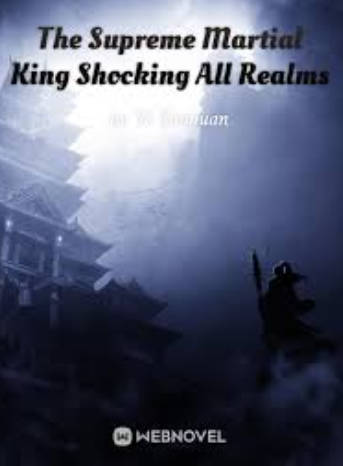Chapter 502 Landmines
As soon as Shulka put down the phone, the German army launched an attack on the hospital.
The Germans put in infantry regiments...it is better to use armored regiments to attack hospitals and schools, because places like schools and hospitals will always have more open space for tanks to maneuver.
The problem is that the German army is fighting on several fronts at this time, especially in the north to block the Stalingrad Front Army, and almost all of its armored main force, the Fourth Panzer Army, is used there.
In the direction of Stalingrad, all the German army can do is to invest in infantry regiments.
However, this does not mean that the German army has no tanks. The German infantry also has tanks, but the number is relatively small.
The German army did not come up with many people. There was only one company, and two tanks covered and attacked Building No. 5 in the northwest corner... In order to facilitate the identification and operations within the army, Shulka numbered the buildings before that.
In fact, the buildings of the hospital and the school originally had numbers, but the numbers of the two buildings would be repeated, which is not conducive to command, so they were renumbered according to the location.
Shuerka raised his binoculars and looked in the direction of the German attack, only seeing a few tanks and a few infantry activities.
The German offensive doesn't look like much, but it's actually quite clever.
Building No. 5 is relatively close to the hospital. It can only be covered by Building No. 17 on the other side. Moreover, the German army launched an attack from the flank of Building No. 5, so that there is no need to face the building and rely on the aisle Firepower built with doors and windows.
All the Germans have to do is use tanks to knock a hole in the side wall, and then the Germans can file in and **** control of the building from the Soviets.
As long as Building No. 5 is captured, other parts of the German army can continue to attack by using its condescending height to cover, that is, break down one by one.
This is also a weakness that relies on building defenses.
Buildings are not like a line of defense. The line of defense can use trenches, traffic trenches for reinforcements, or provide fire support from a distance.
But in the defense of the building, on the one hand, the open space between the two is often blocked by the enemy's machine guns and artillery fire and cannot be reinforced, on the other hand, there are many blind spots for each other.
As long as the enemy finds the right angle to attack, the Soviet troops in other buildings can only watch and cannot participate.
At this time, the situation is more or less like this, most of the attacking German troops are either in the blind spot or out of range.
But if the German army thought that the defense of the Soviet army would be so simple, it would be wrong.
"Number thirteen, secret bit 1672, distance 281, three rapid-fire shots!"
"Number fifteen, secret bit 1928, distance 309, three rapid-fire shots!"
…
Following a series of orders, the mortars on the roof of each building roared, and a shell accurately hit the German offensive position and exploded.
The advantage of building defense warfare is that the distance between buildings is fixed, and they have no feet and cannot move, so artillery observers can conduct field surveys and map them early in the morning and record the data on drawings.
Once the German army launches an attack somewhere, artillery observers can easily mark the enemy's position on the blueprint and calculate the mortar positions that can hit the enemy and even provide them with accurate parameters.
In this regard, Shulka did not dare to hope that every soldier of the 82nd Infantry Regiment could learn to count elements.
In fact, this is not too necessary, and the Soviet infantry generally has a low level of education and cannot learn it in a short time.
So Shulka selected more than 30 people from the army to be trained as artillery observers... It is not difficult to select more than 30 people from more than 1,000 soldiers. They either have a certain level of education or are originally artillerymen. birth.
What they have to do is to practice ballistic calculation and measurement all day long, and then combine them with mortar crews for training.
With these people, the next thing is easy.
The first thing to do after occupying the hospital was to pull a few telephone lines in the various buildings... This was supposed to be done by radio, but of course the 82nd Infantry Regiment didn't have any radios, so they had to use telephone lines instead.
The reason why I need to pull several telephone lines is because I am worried that the telephone lines will be blown up and lose contact.
Of course, in addition to this, the communications soldier must be ready to connect at any time.
Thus, the entire building complex was united into a whole through these telephone lines to support each other... After the observer calculated the data, he told the artillerymen that the artillerymen only needed to fire the shells according to the order.
The German army did not give up because of this, they braved the artillery fire and continued to charge, and even blasted a big hole in the side wall with tank guns.
It seemed that victory was in sight, because they only needed to crawl into a hole in the wall to avoid the mortar shells whistling overhead.
However, they are too naive to have such an idea.
Continuing to move forward, suddenly a row of grenades fell from the sky, followed by another row... The grenades "boomed" near the wall hole like firecrackers.
But the German tanks have nothing to do about it... Tank guns have a certain elevation angle. If the distance is too close and the target is at a high level, it will exceed the elevation angle and cannot shoot.
This is not the worst, followed by a condescending pouring down of bullets, beating the German soldiers screaming.
It turns out that the Soviet army had already drilled perforations on the side of the wall. In order to confuse the enemy, they also blocked the perforations... If the perforations were too obvious, the German army would knock them out one by one with tanks or assault guns in advance.
Then, when the German army approached, the perforation holes were suddenly opened to shoot at the enemy.
In this case, the German army was almost unable to fight back, and could only leave a corpse amidst gunfire and explosions and fled.
In the end, there was even a tank that was hit by a rocket while turning around and caught fire.
The next time you attack the German army, you will learn how to behave.
They first used tanks and artillery fire to hit the side of the wall for a while, and the side walls were all in ruins and even some parts collapsed. In this way, there was nothing that could become a Soviet bunker.
At the same time, the German army also organized more violent mortars to suppress the roofs of the buildings. In this case, they launched a fierce attack under the cover of tanks again.
This time, they successfully broke into the first floor of the building.
The German soldiers were about to breathe a sigh of relief, but suddenly found that they had fallen into another trap.
To be precise, it is not a trap, but a minefield.
The entire first floor is already full of mines, underground, on the table, by the windows...
"They actually planted mines in the room!" Major General Andreas, the commander of the 29th Motorized Infantry Division, shouted angrily: "How could they plant landmines in the room? Who would plant mines in the room?"
If Shulka heard this sentence, he would ask back: "Why can't we plant mines in the house? As long as it works!"
(end of this chapter)
RECENTLY UPDATES





